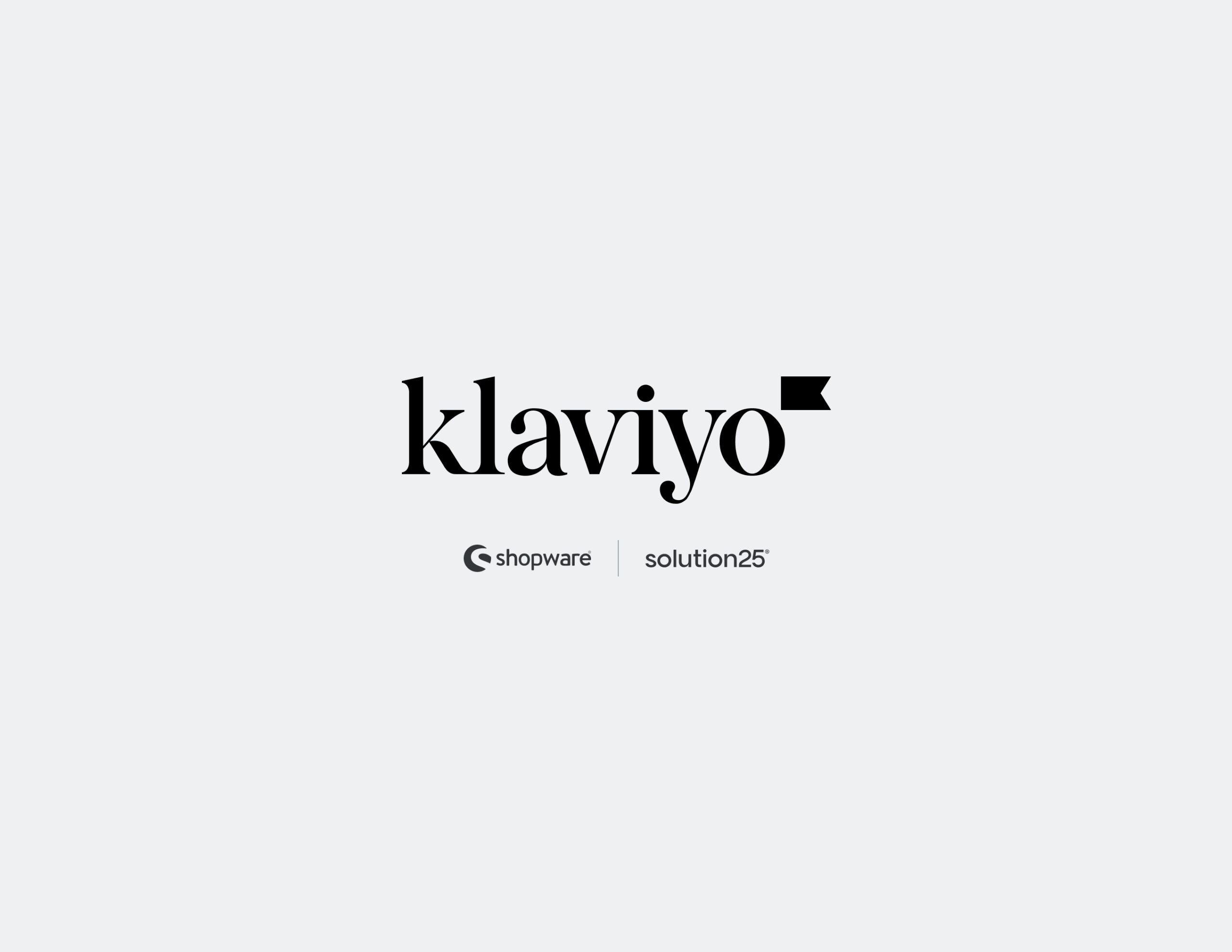Shopware Platinum Partner
Extension Premium Partner
200+ Projects
75+ Experts
Shopware Platinum Partner
Extension Premium Partner
200+ Projects
75+ Experts

If you run a Shopware store or are working with one, this guide’s for you. It walks you through how to connect Klaviyo, a tool that makes marketing easier and smarter, with your Shopware setup. Klaviyo helps you send better emails, see what your customers are up to, and automate personalized messages that actually work. We’ll cover everything step-by-step from linking Klaviyo to your store, setting up live tracking, to launching marketing campaigns that speak directly to your customers.
Klaviyo’s all about helping eCommerce folks like you connect with customers in a way that feels personal and data-driven. Think targeted emails, smart automation, and analytics that show you what’s working. Let’s get your Shopware store ready to make the most of it!
Klaviyo is a marketing platform built from the ground up for online stores. It’s like having a super-smart assistant who knows exactly what your customers are doing browsing products, adding stuff to their carts, or even abandoning checkout. With that info, Klaviyo helps you create emails and texts that hit the right note at the right time.
Shopware plays nice with a ton of tools, but Klaviyo’s real-time tracking and deep integration make it a standout. Picture this: a customer adds a pair of sneakers to their cart but bails before buying. Klaviyo can send them a friendly email with those exact sneakers, tempting them to come back. It’s like magic, but it’s just smart tech.
Good news: Klaviyo’s got an official plugin for Shopware, and it’s super easy to install right from your admin panel.
Quick Tip: Double-check that your Shopware version matches the plugin’s requirements. You can find this in the plugin’s documentation.
Pro Tip: Make sure you copy the key exactly no extra spaces or typos.
In the Klaviyo plugin settings, enable these key tracking events:
These events are the backbone of Klaviyo’s automation, letting you send targeted emails based on what customers do.
A product export and dynamic product group are created automatically. To set up manually, create a dynamic product group for your catalog.
Name the Product Group: Choose any name, then open Conditions.
Change the first dropdown to “Active,” then switch “is equal to” to “Yes.”
Click the blue Save button at the top of the page.
Add a Sales Channel: On the right-side panel under Sales Channel for product comparison, click Add new sales channel and give it a name (e.g. “Klaviyo”).
Scroll to Payment and Shipping and turn on “Line by line (horizontal) calculation.”
In Storefront Sales Channel choose your main storefront from the dropdown, fill in Storefront domain, and the remaining fields.
Under Product export configure export settings, then flip Status → Active to “on.”
Scroll back to the top, open the Template tab, and paste the XML template below into the Product row box.
{% if product != null %} {{ product.id }} {% if product != null %} {{ product.productNumber }} {% else %} not set {% endif %} {% if product.translated.name != null %} {% endif %} {{ seoUrl('frontend.detail.page', {'productId': product.id}) }} {% if product.translated.description != null %} {{ product.translated.description|escape }} {% else %} - {% endif %} {{ product.calculatedPrice.unitPrice|number_format(context.currency.itemRounding.decimals, '.', '') }} {% if product.cover != null %} {{ product.cover.media.url }} {% endif %} {% if product.categories|length > 1 %} {% set catNames = '' %} {% for cat in product.categories %} {% if loop.last %} {% set catNames = catNames ~ cat.name %} {% else %} {% set catNames = catNames ~ cat.name ~ ", " %} {% endif %} {% endfor %} {{ catNames }} {% else %} {% if product.categories.first != null %} {{ product.categories.first.name }} {% else %} no-category {% endif %} {% endif %} {{ product.availableStock }} {% endif %}
On the right-side panel you’ll now see a Klaviyo plugin entry. Copy its Export URL, add it as a new Source in Klaviyo
Next, verify field mapping to finish the feed setup.
Webhooks are like a direct line between Shopware and Klaviyo, sending updates in real time.
Make sure your Shopware version matches the plugin’s requirements. If not, update Shopware or use a compatible plugin version per the documentation.
Why isn’t Klaviyo tracking events?
Make sure the plugin is active, verify your API key, and confirm Klaviyo scripts load in Developer Tools.
Is Klaviyo free?
Klaviyo’s free plan covers up to 500 contacts and 150 email sends per day.
Does Klaviyo handle refunds?
Klaviyo doesn’t process refunds, but you can trigger refund-related emails via webhooks.
How do I know if my DNS records are verified?
In Klaviyo, go to Domains and Hosting; a green checkmark signals SPF and DKIM are set.
Can I use Klaviyo for SMS marketing?
Yes. Enable SMS in Klaviyo and obtain customer consent before sending texts.